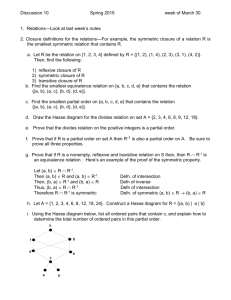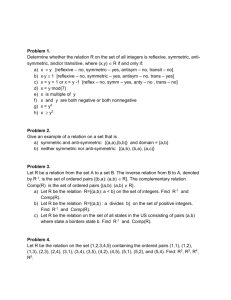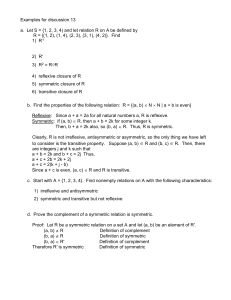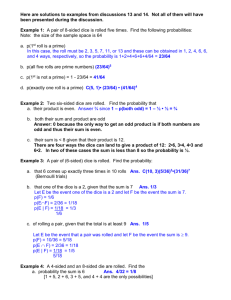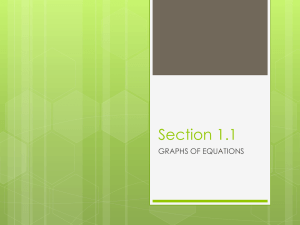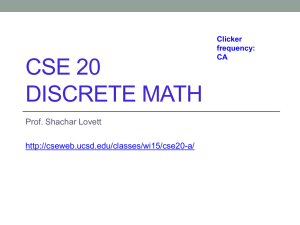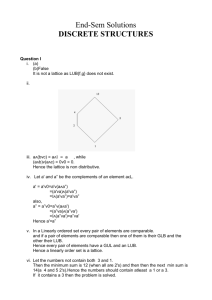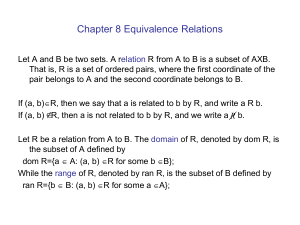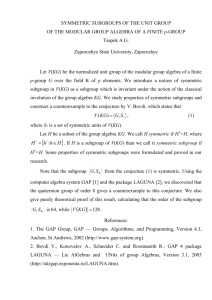Examples to be discussed the week of October 29 or the week of
advertisement
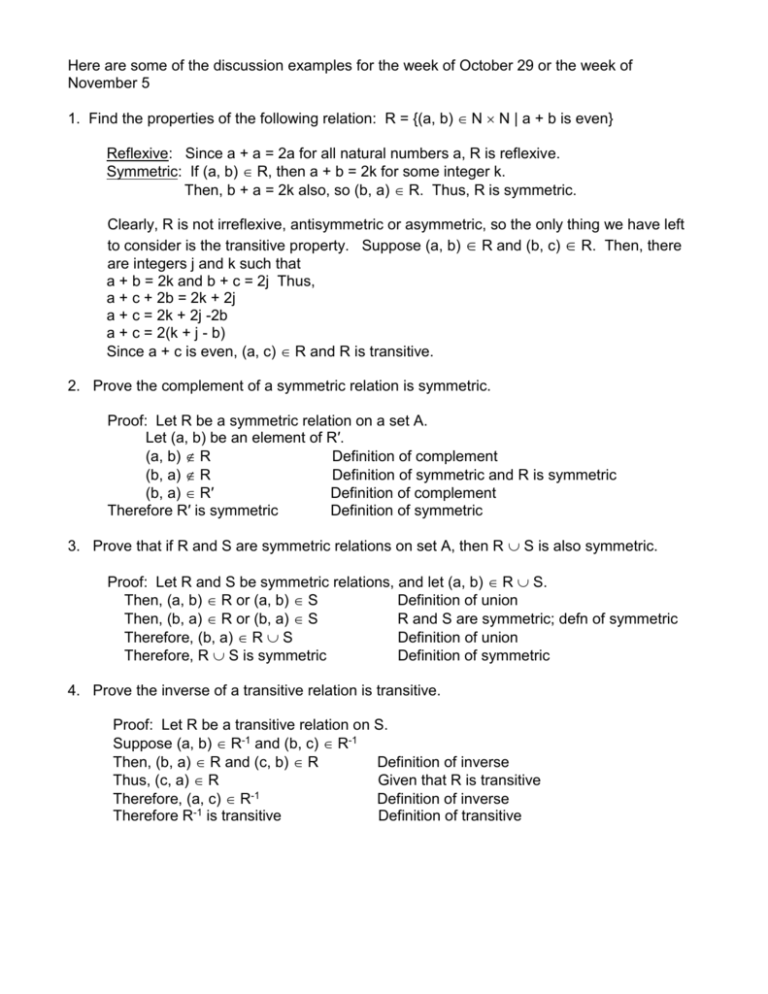
Here are some of the discussion examples for the week of October 29 or the week of
November 5
1. Find the properties of the following relation: R = {(a, b)N N | a + b is even}
Reflexive: Since a + a = 2a for all natural numbers a, R is reflexive.
Symmetric: If (a, b) R, then a + b = 2k for some integer k.
Then, b + a = 2k also, so (b, a) R. Thus, R is symmetric.
Clearly, R is not irreflexive, antisymmetric or asymmetric, so the only thing we have left
to consider is the transitive property. Suppose (a, b) R and (b, c) R. Then, there
are integers j and k such that
a + b = 2k and b + c = 2j Thus,
a + c + 2b = 2k + 2j
a + c = 2k + 2j -2b
a + c = 2(k + j - b)
Since a + c is even, (a, c) R and R is transitive.
2. Prove the complement of a symmetric relation is symmetric.
Proof: Let R be a symmetric relation on a set A.
Let (a, b) be an element of R′.
(a, b) R
Definition of complement
(b, a) R
Definition of symmetric and R is symmetric
(b, a) R′
Definition of complement
Therefore R′ is symmetric
Definition of symmetric
3. Prove that if R and S are symmetric relations on set A, then R S is also symmetric.
Proof: Let R and S be symmetric relations, and let (a, b) R S.
Then, (a, b) R or (a, b) S
Definition of union
Then, (b, a) R or (b, a) S
R and S are symmetric; defn of symmetric
Therefore, (b, a) R S
Definition of union
Therefore, R S is symmetric
Definition of symmetric
4. Prove the inverse of a transitive relation is transitive.
Proof: Let R be a transitive relation on S.
Suppose (a, b) R-1 and (b, c) R-1
Then, (b, a) R and (c, b) R
Definition of inverse
Thus, (c, a) R
Given that R is transitive
-1
Therefore, (a, c) R
Definition of inverse
Therefore R-1 is transitive
Definition of transitive
5. Prove that a relation R on a set S is symmetric if and only if R = R-1
Part 1: If R is symmetric, then R = R-1.
In this case we must show that if R is symmetric, then R R-1 and R-1 R.
Let (a, b) R.
Then, (b, a) R.
Then, (a, b) R-1
Therefore, R R-1.
Given that R is symmetric
Definition of inverse
Definition of subset
Let (x, y) R-1
Then, (y, x) R
Then, (x, y) R.
Therefore R-1 R
Therefore R = R-1
Definition of inverse
Given that R is symmetric
Definition of subset
Definition of set equality
Part 2: If R = R-1 then R is symmetric
(Specifically, what we need to show is that if (a, b) R, then (b, a) R.)
Let (a, b) R.
Then, (a, b) R-1
Then, (b, a) R.
Therefore, R is symmetric.
Given that R = R-1
Definition of inverse
Definition of symmetric
